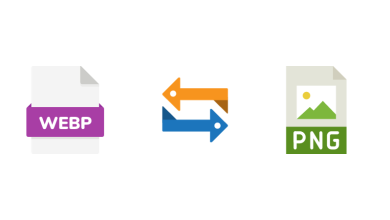
Organizations encounter significant challenges in automation, such as managing diverse technologies, navigating complex business processes and ensuring seamless collaboration between human workers and technology. As enterprises advance in their automation journeys, the complexity of their tech stack and the overall scale of operations increase substantially. In multi-vendor environments, limited visibility across end-to-end processes hinders the cross-utilization of resources, particularly in automation operations, further complicating management and optimization efforts.
Leading enterprises with advanced automation approaches are increasingly turning to orchestration to address such challenges. It allows them to seamlessly manage and integrate diverse automation tools and technologies, ensuring operations are consistent with existing enterprise applications and human workflows. Businesses can use automation orchestration to automate tasks, streamline processes and strike an appropriate balance between technology and the workforce.
What Challenges Arise from Managing Diverse Technologies?
Integration Complexity
As organizations adopt a varied range of technologies, they frequently face major integration issues, especially when working with legacy IT systems. These older technologies, often crucial to business operations, generally lack modern interface capabilities, making seamless integration challenging. This leads to fragmented operations, data silos and reduced efficiency, highlighting the need for managing complex processes.
Inconsistent Processes
Managing several technologies frequently results in process inconsistencies due to system and workflow misalignment. Often, this starts with a manual process before automation is applied, leading to inefficiencies, errors and fragmented customer experiences. For instance, different technologies may have unique file formats and data needs, making it difficult to communicate data between systems and establish uniform workflows.
Security Risks
Fragmented management of numerous technologies may expose businesses to increased security risks. When systems are not correctly connected, gaps and vulnerabilities can arise, providing potential entry points for cyber threats. By 2025, the number of globally connected devices is estimated to exceed 75 billion. As a result, protecting corporate networks from the potential risks posed by such devices has become more difficult and complex for security teams.
How Automation Orchestration Addresses Challenges?
Unified Management Platform
Orchestration software can be leveraged to automate complex operations such as deploying and managing applications. These tools offer a unified management platform, providing a centralized interface that integrates various IT tools and systems. This enables IT administrators to orchestrate tasks across multiple systems efficiently. By centralizing control, automation orchestration simplifies the management of diverse technologies, allowing administrators to manage numerous tasks from a single interface. Additionally, monitoring automation orchestration tools for performance issues is crucial, ensuring tasks are executed smoothly and efficiently.
Automated Workflows
Workflow orchestration and automation are complementary technologies, each playing a unique role in process optimization. Orchestration organizes different workflows to ensure they perform seamlessly across the corporate environment by coordinating various automated tasks. Automation focuses on specific workflow activities, increasing efficiency by reducing human intervention in repetitive tasks. Automated workflows enable tasks to be completed seamlessly across several technologies. Understanding these distinctions enables organizations to choose the optimal combination of orchestration and automation to accomplish their operational and strategic objectives.
Reduced Operational Costs
One notable feature of workload automation and orchestration is the significant increase in operational efficiency and cost savings. Organizations may reduce the time and resources spent on repetitive procedures by automating repetitive tasks and managing them from a single platform. These tools help detect and eliminate bottlenecks, ensuring that IT resources are used to their full potential. For instance, in a telecom company, orchestrated automation can help simplify operations by removing redundant customer service tasks like data entry across various systems. It lowers operating expenses and enhances performance by allowing employees to focus on value-driven activities.
Enhanced Visibility and Analytics
Orchestration platforms improve operational efficiency by providing real-time monitoring and analysis of automated business processes, including the performance of both human and digital platforms. This allows companies to track task execution, resource use and the immediate benefits of automation. By integrating orchestration tools, IT organizations may optimize their internal and external workflows, giving users a self-service experience and role-based control over their automated workflows. This increases responsiveness to business needs and allows IT teams to focus on priority tasks.
Best Practices for Implementing Automation Orchestration
Managing workflow orchestration is critical to remaining ahead of the constantly evolving environment of business operations. Adhere to best practices that address key elements of automation strategy to ensure an effective implementation.
Understand the Current Workflows
The initial step in efficient workflow orchestration is to evaluate the current state. To determine where your processes should go, you must understand how they now operate.
Define Clear Objectives and KPIs
Clearly define what the organization expects to achieve through the transformation. Objectives include enhancing operating efficiency, lowering expenses, boosting accuracy and more. Create KPIs to measure the effectiveness of automation initiatives. Track expenses and benefits to determine the actual ROI.
Choose the Right Orchestration Tools and Technologies
Choosing the right tools is vital for the success of automation and orchestration initiatives. The appropriate tools will meet the company’s needs, interact easily with existing systems and offer the flexibility to adapt to new requirements. Choose technologies that will scale with the company as it grows. It involves managing increased workloads and supporting more users and processes. User-friendly automation tools shorten the learning curve and improve adoption rates. Look for easy-to-use interfaces and reliable assistance.
Prioritize Security and Compliance
Determine which security processes and use cases can benefit from automation and orchestration and prioritize them based on their importance and functionality. For instance, prioritize high-volume processes such as incident response and policy enforcement.
Continuous Monitoring and Optimization of Complex Workflows
Continuously monitor and assess the effectiveness of automated processes and orchestrations using metrics like mean time to detect (MTTD), mean time to respond (MTTR) and false positive rates. Utilize these insights to consistently improve and optimize processes and policies.
Conclusion
Automation and orchestration efficiently solves the complexity of managing various technologies by offering a unified platform for integration, streamlining operations and increasing visibility. By following best practices, organizations can maximize the ROI from automation, ensure efficient and scalable operations, and stay ahead of the competition.





